Written by Jiemin Tina Wei, Ferenc Gyorgyey/Stanley Simbonis YSM’57 Research Travel Grant recipient, 2023-2024
December 29, 2023
What is the relationship between work and medicine? It may seem obvious, especially amidst this year’s wave of unionization of medical residents, that medicine is a form of work.
But just as medicine can be work, work can be (and has been, in certain historical moments) medicine.
My dissertation and book in progress, “Ameliorating Fatigue at Work: Workplace-Management, Mind-Body Medicine, and Self-Help for Industrial Fatigue in the U.S., 1900-1950,” investigates the history of attempts to ameliorate workplace fatigue in the first half of the twentieth century. It traces how scientists from industrial medicine, occupational health, physiology, ergonomics, industrial psychology, psychiatry, psychoanalysis, and economics struggled to and succeeded in making work and workers into objects of scientific study.
For the scientists I study, labor dynamics gave context to their discoveries—providing the backdrop, for instance, to their gendered division of labor, as well as their differential compensation and recognition of work done by women. Focusing on the labor dynamics implicit in the production of science resonates with recent calls by scholars to study “a labor history of science.”
A group of historical subjects that I study, clustered around the social networks of physician E.E. Southard, first Director of the Boston Psychopathic Hospital prior to his death in 1920, was interested in this problem in its inverse—looking not at how labor can yield insights into science, but how at how science can yield insights into labor. These psychiatrists and psychiatric social workers collected data and biological material from their mental hospital patients to study the neurological and psychopathic roots of myriad workplace dysfunction, such as refusal to work and tendency to unionize. Oriented, as many of them were, around the eugenics movement, they aimed to socially rehabilitate patients they classified variously as feebleminded, insane, nervous, and psychopathic. Refitting as many individuals as possible to productive work, they sought to resolve the growing social problem of their time, militant labor uprisings. In their medical practice, work was part of disease and cure.
Through the generous support of the Ferenc Gyorgyey/Stanley Simbonis YSM’57 Research Travel Grant, my dissertation took me to the Medical Historical Library in the Harvey Cushing/John Hay Whitney Medical Library at Yale University. My visit focused on the collections of the esteemed neurosurgeon Harvey Cushing, a namesake of the Library. Cushing and his colleague and assistant, pathologist Louise Eisenhardt, were collaborators of Southard and his colleague and assistant, pathologist M.M. Canavan. Due to limitations of surviving materials about Southard and Canavan, Cushing and Eisenhardt’s repositories provide a crucial point of contrast and help populate modern scholarship with details about the social-professional world of these physicians.
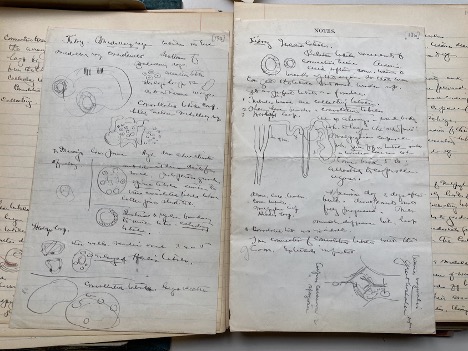
The gems of this collection give material reality to this cohort’s medical work. Cushing, a draftsman in addition to a surgeon, littered his Harvard Medical School lecture notebooks with drawings, leaving behind a kind of illustrated textbook of early-twentieth-century medical education. See for instance, his sketches for a lecture on the kidney.
Left: Harvey Williams Cushing Papers, Histology and Embryology, 1891-92, H.M.S., pp 13a-b.
The Robert Bogdan Disability Collection also held striking visual material documenting the life of workers and patients at state mental hospitals and related institutions. Among the collection’s fifteen enormous three-ringed photo albums, Book 6 features postcards and other images from "Institutions: Insane, Feeble minded, Epileptic, Deaf, Blind, ca. 1900-1930." At the State Hospital in Gowanda, N.Y., for instance, postcards show the kitchen, laundry, operating room, superintendent’s residence, staff house, and nurses house.
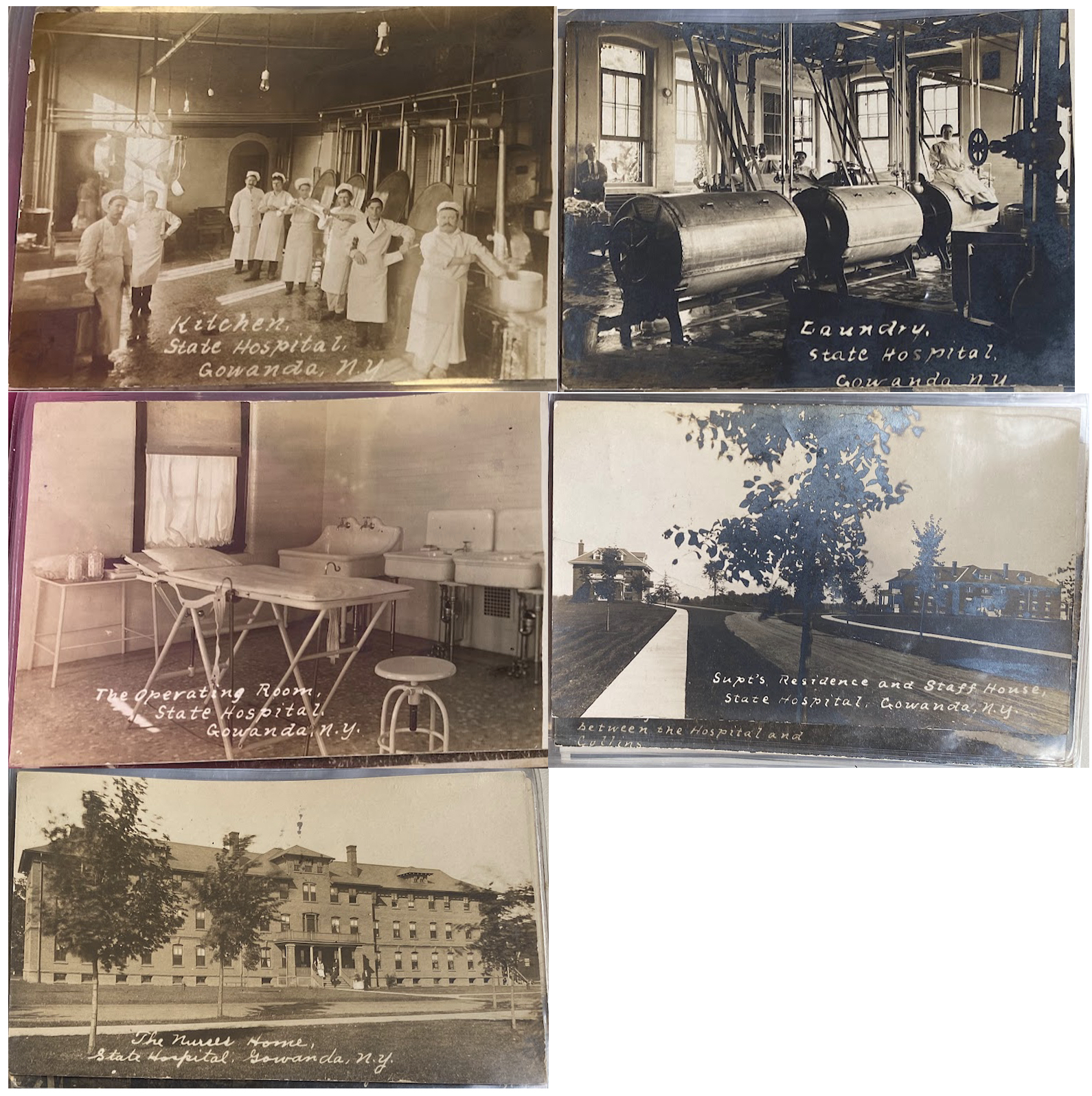
Above: Assorted photos from State Hospital, Gowanda, N.Y. From the Bogdan Disability Collection, Book 6.
Other photos showed “Breaking of Ground for Assembly Building” at the New Jersey State Village for Epileptics at Skillman; Field Day at State Hospital in Willard, NY; and dining rooms in the Massachusetts Hospital in Palmer, MA, and at the State Hospital in North Warren, PA.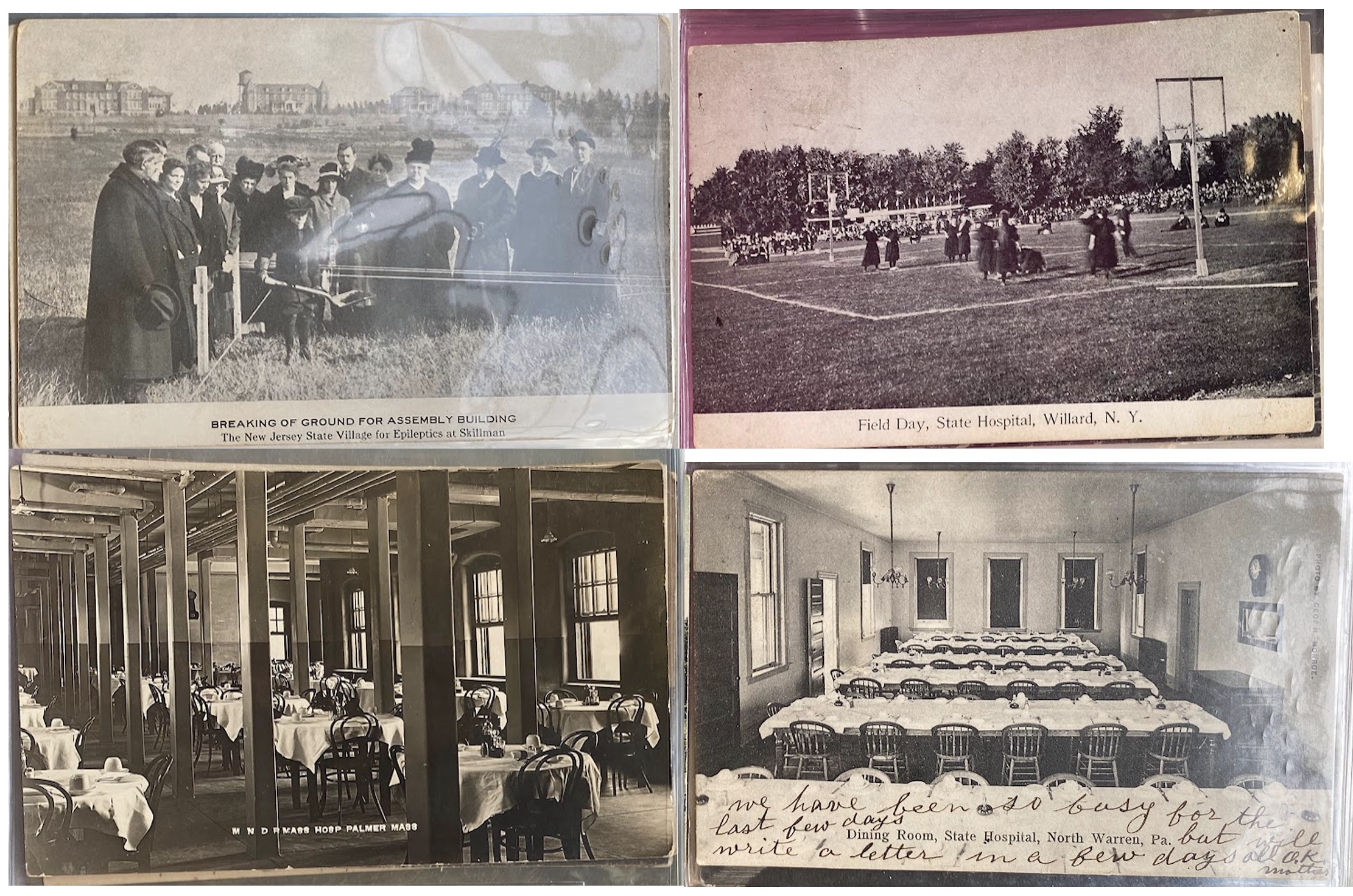
Above: Assorted photos from the Bogdan Disability Collection, Book 6.
Numerous images showed nurses in posed group photos and while recreating, such as at the Asylum in Middletown, NY, and the State Hospital in Gowanda, NY.
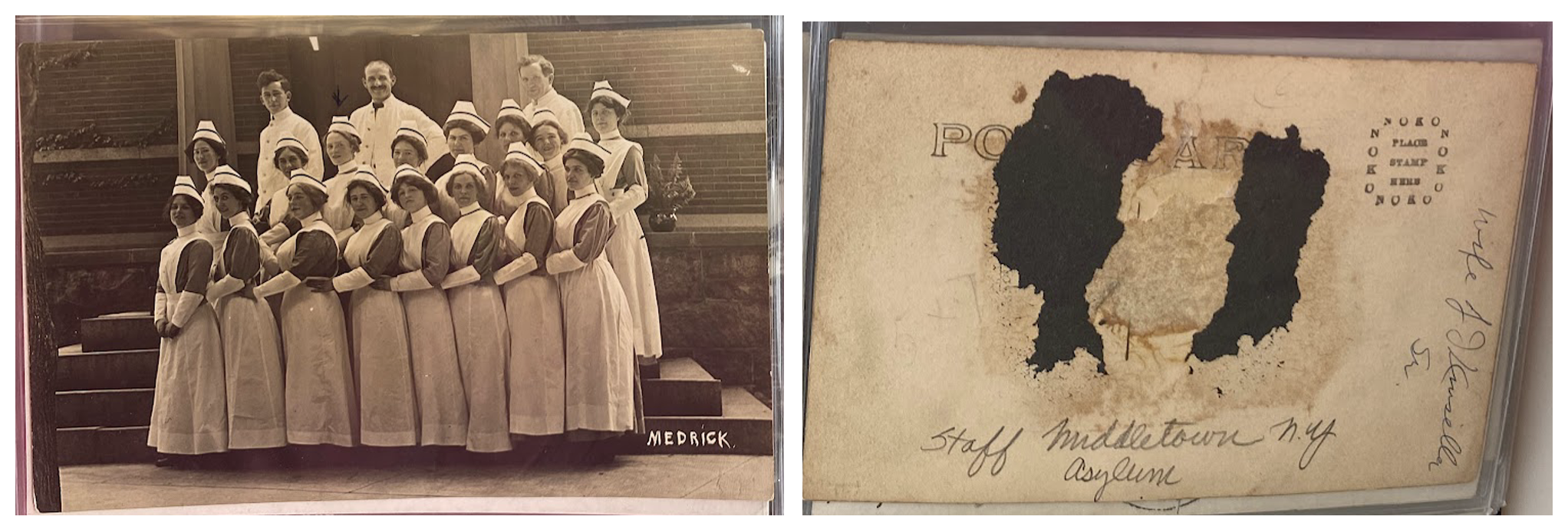
Above: Front and back of postcard, Middletown, NY, Asylum
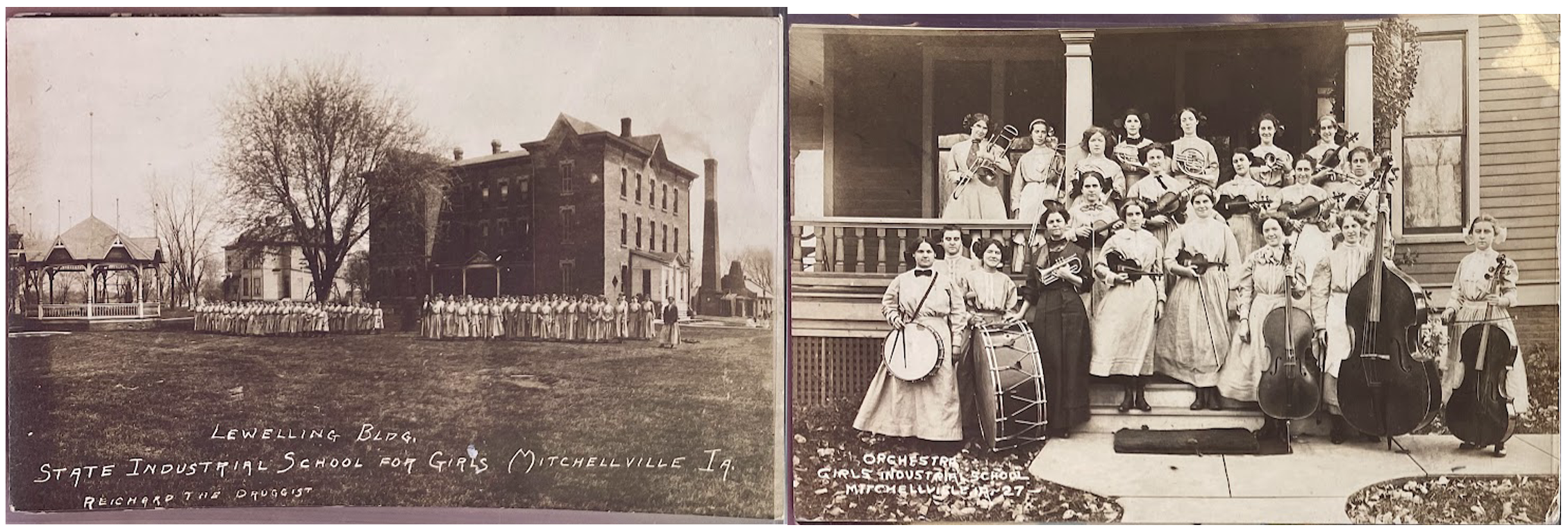
Above: Assorted photos from the Bogdan Disability Collection, Book 6.
The postcards even featured several institutions dedicated to vocational rehabilitation in the U.S. and abroad, such as the State Industrial School for Girls in Mitchellville, IA. These photos, one of which appears to be taken by “Richard the Druggist,” shows these so-called troubled girls gathering outdoors and in their orchestra.
In collections such as these, the rich visual and print material at the Medical Historical Library captures the labor required to carry out medical research and care, as well as the correspondence networks of medical professionals using medicine to respond to crises of labor.
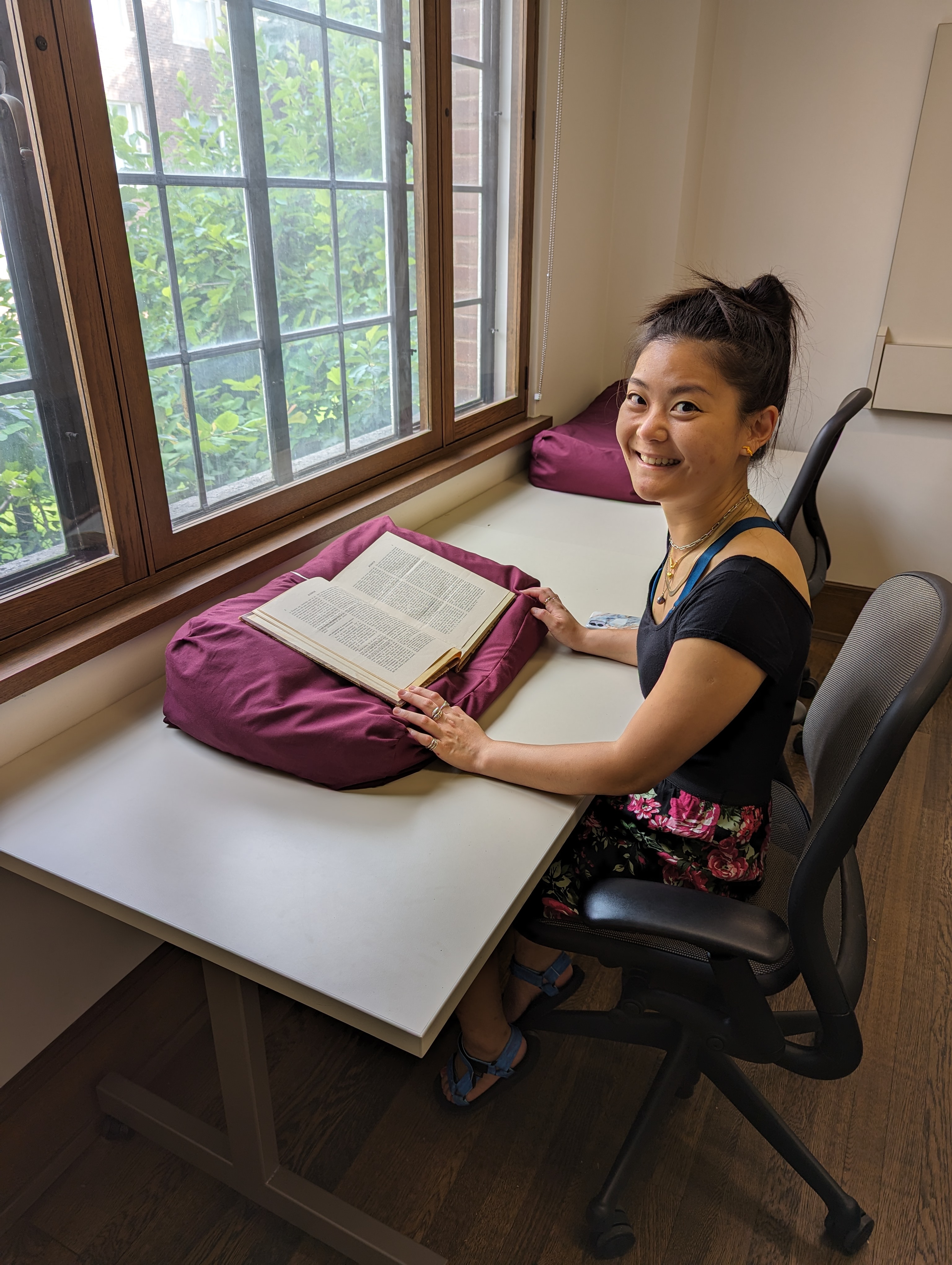
Left: Jiemin Tina Wei is a PhD candidate in Harvard University’s Department of the History of Science. Her dissertation and book in progress, “Ameliorating Fatigue at Work: Workplace-Management, Mind-Body Medicine, and Self-Help for Industrial Fatigue in the U.S., 1900-1950,” investigates the history of attempts to ameliorate workplace fatigue in the first half of the twentieth century. This research has been generously supported by the Ferenc Gyorgyey/Stanley Simbonis YSM’57 Research Travel Grant, and by the wonderful staff at the Medical Historical Library in the Harvey Cushing/John Hay Whitney Medical Library at Yale University, especially Melissa Grafe, Chris Zollo, Kathi Isham, and Christine Bailey.
